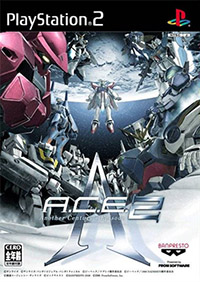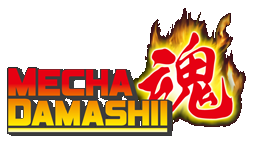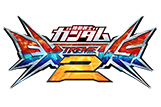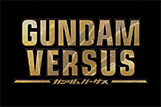Reviews: Another Century’s Episode 2 (9/10)
Posted on : 05-09-2009 | By : Cacophanus | In : Reviews
Hardware: PlayStation 2
0
 After the success of the first game, it was going to be fairly obvious that Banpresto would follow up and fund From Software to make another one. However, From Software didn’t just pump out more units but instead reworked pretty much the entire game from the ground up.
After the success of the first game, it was going to be fairly obvious that Banpresto would follow up and fund From Software to make another one. However, From Software didn’t just pump out more units but instead reworked pretty much the entire game from the ground up.
From the core dash mechanics, to the lock-on system and how all the weapons worked. Whilst the playable unit roster did indeed increase, what made this game so special were all the linear improvements to the game itself. It’s amazing to think that they managed to pull it all off in such a short space of time too.
Whilst this was a sequel to the first game, the narrative was more standalone and comprised of far more character driven narrative. Especially as the game featured unique protagonists and mecha, very much in the same vein as the Original Generation as seen in the Super Robot Wars games. Following on from this, the game now also sported cel shaded 3D character cut-ins. Not only were these present in the very much new and improved launching sequences but also for important narrative sections too. So in presentation alone, the game felt bigger in scope. However the real improvements were to how each of the mecha handled and the broad improvements to the combat.
Specifically, in the first game the animations for initiating a boost and firing were quite laboured and long. This added a sense of weight, so as to infer that you were piloting a mecha. In this game the animations were drastically shortened, which gave a greater sense of immediacy to the controls but this was tempered with an element of gravity to the boosting. In that when you boosted you would have to manage your altitude as the mecha, in a ground based environment, would fall downward.
Following on from this the dash attacks were much more open, so you can hold an enemy in your sights in a broader ballistic arc (compared to the far more restrictive arc in the first game). Not to mention that if you dashed directly past an enemy and fired, your mecha would flip around and fly backwards (though at a greatly reduced speed). Whilst it looked and felt quite cool, it also put you at a greater tactical disadvantage (similar in approach to how Virtual On handled backwards dash attacks). Close combat was also separated out to a specific button input and made non-height specific, as previously you’d have to be on the same plane of attack to have any hope of connecting.
All these changes coalesced into something far more functionally fluid and felt as though the whole game had been re-invented but still very much in-line with what was originally intended.
Other major changes worth noting were the addition of combination attacks and a far more linear upgrade system. In regards to the latter, the first game utilised upgrades as a means to augment certain abilities at the expense of others. Here the upgrades were far more linear, so an upgrade was always a noticeable improvement and didn’t undermine any other abilities. Coupled with this was the experience points that allowed you to upgrade mecha even further. These experience points were awarded when you successfully chained enemy kills together, with the longer the chain resulting in more points. Unfortunately, the amount of experience points you could earn at any one time was very small indeed. This meant that the final limit release upgrade for each mecha, effectively giving them infinite ammo, was a pretty tedious grind to get to.
Whilst the limit release was useful, the ammo setup for weapons made them much more understandable too. As previously each weapon would have a short clip of shots that would quickly recharge. Here the clips were made much larger and the reload time more pronounced. In addition you often had more subweapons now too, so this approach actually made you cycle through your available attacks more readily.
The other major element to this game was simply how large it was. It was practically double in size to the previous game but this did come at a cost. In that, due to the increase in missions much of the objectives were simplified into just destroying everything. The first game had far more interesting missions but this game had more fluid combat, so the repetitive missions didn’t grate so much. Especially as the unit count increased massively too, including variable fighters from Macross and new aura battlers from the then unreleased Wings of Rean anime.
Overall then, this was a substantial improvement to the first game, not only in terms of content but also improved functionality too. The engine also received considerable optimisation as well, with more detailed textures, increased draw distance and updated explosion effects. Normally iterative releases like this wouldn’t get this many improvements between each release. Considering the short development time this game game had, the sheer amount of content and improvements present are nothing short of remarkable.
As a game then, this is very much a title that any serious mecha gamer should have in their collection.
Tamashii: 9/10
A special vocal version is also available, where songs from the host anime play in place of the previous bespoke background music. The core game remains unchanged though.










